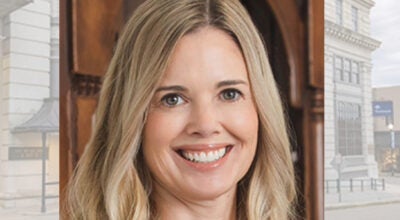Corps scientist helps save lake, culture
Published 11:23 am Monday, February 17, 2014
A Vicksburg ecologist is home after spending a month training scientists how to monitor and perhaps solve pollution problems plaguing South America’s largest lake and the indigenous people living on artificial islands there.
As part of the prestigious Fulbright Specialist program, Dr. Paul DuBowy, the environmental program manager for the U.S. Army Corps of Engineers’ Mississippi Valley Division, spent four weeks training scientists at a university in Peru, on how to deal with water pollution in Puno Bay of Lake Titicaca.
He returned Feb. 4 after teaching courses at Universidad Nacional del Altiplano in Puno, Peru, and designing a program using artificial wetlands to clean up pollution being poured into the lake.
“It’s becoming something like a mini Gulf of Mexico,” DuBowy said of Puno Bay.
Research has shown that plants in wetlands act as a biofilter to help remove sediments and pollutants such as heavy metals and excess nutrients from wastewater.
The cleanup project presented in South America is similar to some of DuBowy’s projects for the Corps of Engineers, he said.
At 12,500 feet above sea level, Lake Titicaca situated between Peru and Bolivia, is the highest navigable waterway in the world and home to the Aymara people who live on floating islands called Uros that are made entirely of reeds.
“The Aymara people who live on those floating islands are a really unique community. Their predecessors have been there since pre-Inca times,” DuBowy said.
Pollution and raw sewage going into the Lake Titicaca from Puno, a city of about 120,000 people, has caused fish kills and low oxygen content in the water, he said.
“We have many of the same problems here. I used to be a professor at Perdue and we had the same problems up there,” he said. “Too many nutrients were getting into river and they ended up in the Gulf of Mexico.”
The pollution is also eating away at the reed islands constructed by the Aymara people. The islands are composed completely of bulrush and are anchored in place with stakes and ropes. Every few months, a new layer of bulrush is laid down to replace what has decomposed underneath in a practice that dates back at least 800 years, though some scientists say the Aymara might have been living this way for up to 5,000 years.
The most widely accepted explanation for the artificial islands is that when Incas became the dominant culture in Peru sometime in the early 13th century, they would enslave the Aymara people, causing them to develop their unique floating settlements.
“They went as far away as they could to be safe from the Incas,” DuBowy said.
The trip was the result of DuBowy’s second Fulbright Specialists Grant and one of his many teaching trips outside the United States. In 2011, he traveled to the University of Lodz in Poland where he taught in the Erasmus Mundus Master of Science Program in ecohydrology as part of the Fulbright program.
In 2012, he traveled to the University of the Algarve in Portugal and last fall he taught in both Poland and Portugal.
The Fulbright program is America’s flagship international educational exchange activity and is sponsored by the U.S. Department of State, Bureau of Educational and Cultural Affairs. In its more than 60 years in existence, thousands of U.S. faculty and professionals have taught, studied or conducted research abroad as part of the program.
Approximately 400 Americans will teach abroad this year as Fulbright specialists.







